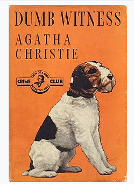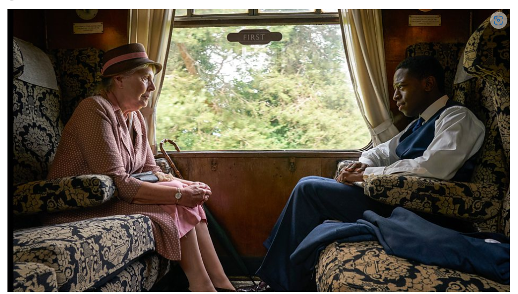Agatha Christie – Tales with a Pharmacy Plot Twist
21 Jun . 13 min read.
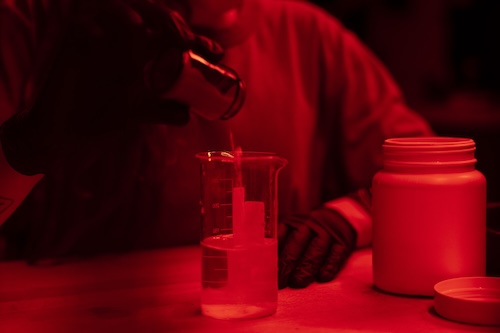
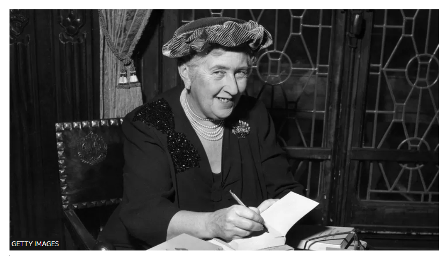
Image Source: https://www.bbc.co.uk/news/uk-england-oxfordshire-67272899 (32)
Dame Agatha Christie, also known as The Queen of Crime was one of the bestselling novelists of all time and she authored 66 detective novels, 14 short story collections and more than 20 plays (1-3).
Some of her famous story characters included:
· Belgian Detective Hercule Poirot
· Miss Marple (a sweet little old lady from St Mary Mead, England)
· Tommy and Tuppence (two young sleuths) (1-2)
Many of her most well-known works have been adapted into films, including:
· A Haunting in Venice
· Death on the Nile
· Murder on the Orient Express (4-6)
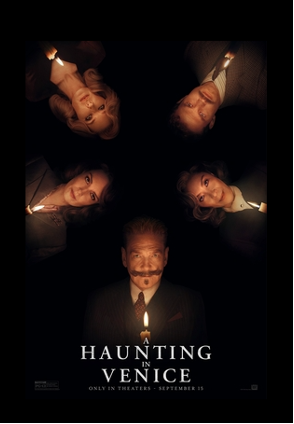
Image Source: https://en.wikipedia.org/wiki/A_Haunting_in_Venice#/media/File:A_Haunting_in_Venice_(2023)_poster.jpg (7)
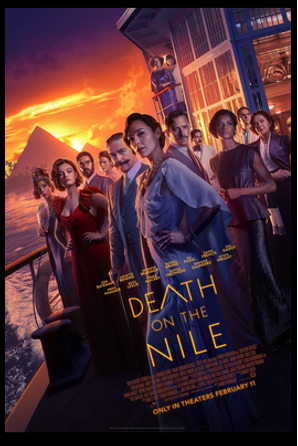
Image Source: https://en.wikipedia.org/wiki/Death_on_the_Nile_(2022_film)#/media/File:Death_on_the_Nile_(2020_film)_poster.png(8)

Image Source: https://en.wikipedia.org/wiki/Murder_on_the_Orient_Express_(2017_film)#/media/File:Murder_on_the_Orient_Express_teaser_poster.jpg(9)
Pharmacy Background
An interesting fact that many people are unaware of is that surprisingly the famous crime writer Agatha Christie actually has a pharmacy background.
Christie actually began writing detective fiction novels while working as a nurse and pharmacist during World War I. She is best known for her 66 detective novels and 14 short story collections, as well as the world’s longest-running play – The Mousetrap. Christie’s books have sold over a billion copies in the English language and a billion in translation (10).
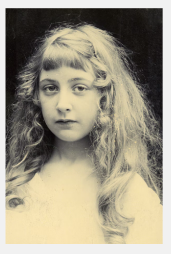
Image Source: https://www.agathachristie.com/about-christie
Agatha Mary Clarissa Miller was born on September 15th 1890 in Torquay, Devon. Her father was a wealthy American man called Frederick Miller, and her mother was called Clara. The family lived a comfortably well-off way of life and Agatha was actually home schooled by her father.
Agatha was an excellent story teller and she taught herself to read by the age of 5. She enjoyed reading a variety of books including English classics such as The Railway Children and The Story of the Treasure Seekers by Edith Nesbit. Young Agatha also enjoyed reading poetry and thrillers originating from The United States of America (9,10).
Agatha spent some time in France during her childhood which cemented her lifelong passion for travel and adventure. She attended a girl’s school in Torquay for some time but after finding it unsuitable her mum transferred her to attend boarding schools in Paris. By age 18, Agatha was writing amateur short stories.
Agatha spent some time in Egypt with her Mum and Dad on a social visit (known as a debutante season) where they visited archaeological sites and socialised with the those seen as the elite persons in society there (10).
The Creation of Poirot
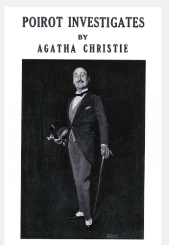
Image Source: https://www.agathachristie.com/about-christie (10)
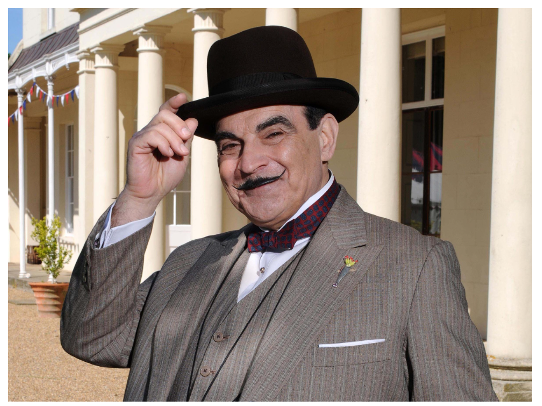
Image Source: https://www.northcountrypublicradio.org/news/npr/340092360/case-closed-agatha-christie-s-detective-poirot-solves-his-last-tv-mystery (11)
Agatha Christie’s knowledge of poisons was certainly exceptional. Few other novelists can claim to have been read by pathologists as reference material in real poisoning cases. Many people are not aware of the reason to why Christie’s knowledge on poisons and medicines was so substantial (4-6).
Christie actually began writing detective fiction novels while working as a nurse and pharmacist during World War I.
In the First World War, Christie volunteered as a nurse at her local hospital in Torquay. Christie enjoyed the work but when a new dispensary opened at the hospital it was suggested that she might work there instead. Her new role required further training, and Christie became a pharmacist in 1915 (4-6).
She trained under an experienced pharmacist. In 1917 she completed the exam of the Worshipful Society of Apothecaries (10-12).
Tales with a Pharmacy Plot Twist
An education in pharmacy not only helped Christie attend to patients during the First World War, but also aided her creative pursuits in literature (13-14).
The Mysterious Affair at Styles
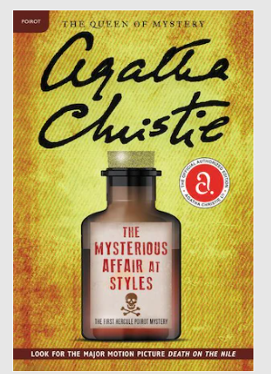
Image Source: https://www.agathachristie.com/stories/the-mysterious-affair-at-styles (13)
Agatha Christie’s first novel was called The Mysterious Affair at Styles and it involved the poisoning of a victim with strychnine (13). This was Agatha Christie's debut novel and was also the first to feature Hercule Poirot, her famously eccentric Belgian detective.
Sad Cypress
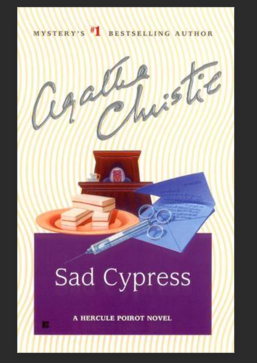
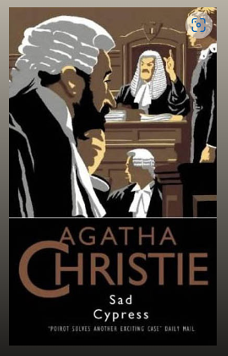
Image Source: https://www.goodreads.com/review/show/1628556922 (14)
Image Source: https://archive.org/details/20.SadCypress1940-Suchet (16)
Sad Cypress was the first courtroom drama Christie wrote for her Belgian Detective character Poirot. It was written in the build up to the Second World War, a particularly prolific period for Agatha Christie and her little Belgian detective character.
In this case, an elderly stroke victim dies without having arranged a will. Christie’s novel Sad Cypress involved an overdose of the drug morphine being administered through; it was originally thought via fish paste on sandwiches. However, it was later gleaned that instead, the fatal drug morphine was actually served in a pot of tea (14-16).
Dumb Witness
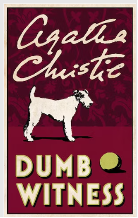
Image Source: https://www.agathachristie.com/stories/dumb-witness
Image Source: https://en.wikipedia.org/wiki/Dumb_Witness
In this crime story, a wealthy sphinster Emily Arundell writes to Hercule Poirot in the belief she has been the victim of an attempted murder after a fall in her Berkshire home. Her family and household blame it as an accident claiming that she tripped over a rubber ball left on the stairs by her frisky Wire Fox Terrier Bob. When Poirot receives the letter, he learns Emily is dead (cause of death is noted as liver failure). Poirot decides to investigate the case because of its unusual nature and also after learning that Emily made a recent new will (17-18).
During his investigation, Poirot learns that a luminous aura was noticed being exhaled / released from the dead woman's mouth when she spoke during a séance (17-18).
This is where Agatha Christie unquestionably utilised her knowledge of chemistry and pharmacy to further enhance the plot of this crime novel.
The Belgian detective thoroughly investigates the case. When the murderer is revealed, it is gleaned that when the attempt to physically make Emily fall down the stairs (via a trip wire) failed, the murderer turned to other chemical/pharmaceutical means instead (17-18).
They filled one of Miss Arundell's medicine capsules with elemental phosphorus, knowing the poison would mimic the symptoms of liver failure. The aura witnessed by those attending the seance was due to the poison Miss Arundell had unknowingly consumed (17-18).
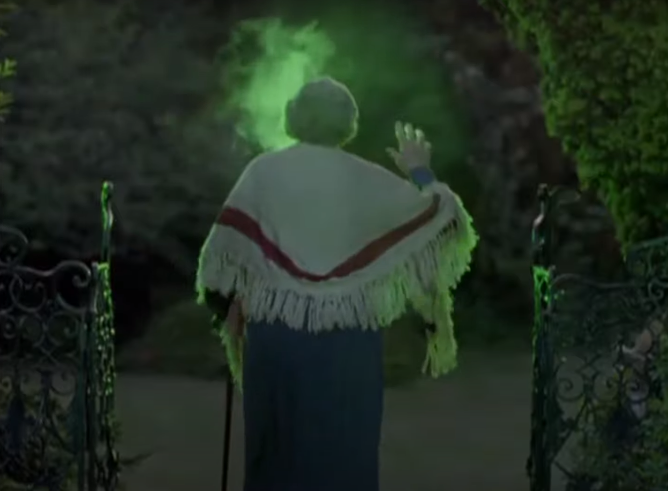
Image Source: https://www.youtube.com/watch?v=FFnYLL6lpBs (18)
Time: 5mins 10 sec
Yellow Iris
Published as a short story in 1937, Yellow Iris is set in a restaurant named Jardin des Cygnes. Hercule Poirot gets an alarming telephone call late at night, in which the phrases “it’s life and death” and “the table with the yellow irises," are whispered. Poirot arrives at a party being held by a rich American, precisely one year since his wife Iris had been killed at a similar event. The only difference between now and then is the presence of Poirot (19). The atmosphere at the party turns from jovial to very serious when Poirot unmasks the killer. It is later revealed that the murderer poisoned the victim by placing cyanide in a champagne glass (19-20).
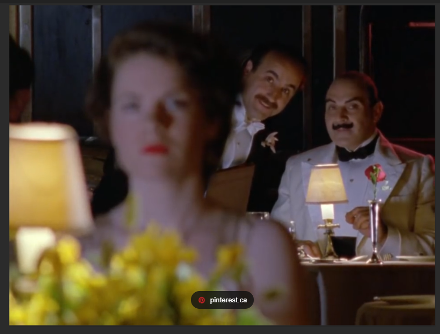
Murder Is Easy
This is a 1939 novel written by Agatha Christie and it has also recently been turned into a TV adaptation.
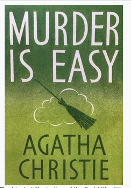
Image Source: https://en.wikipedia.org/wiki/Murder_Is_Easy
Image Source: https://www.bbc.co.uk/mediacentre/2023/murder-is-easy-first-look
This novel involves the characters Miss Pinkerton and Luke Fitzwilliam investigating a killer who is on the loose in the sleepy English village of Wychwood under Ashe. The villagers believe the deaths are mere accidents, but Miss Pinkerton knows otherwise – and when she's later found dead on her way to Scotland Yard, Fitzwilliam feels he must find the killer before they can strike again. In this novel, numerous murders take place (21-22).
Christie certainly uses her background in nursing and pharmacy to inspire the plot in this novel.
One victim died of a blood infection and it is revealed that victim had a wound and that the murderer was in fact the person who applied the dressing to the wound. Instead of applying a clean dressing, the murderer infected the dressing with yellow pus seeping from their cat’s ear, causing the victim to pass away from a blood infection.
Another victim was poisoned by the murderer, who poisoned their drink with rat poison (21-22).
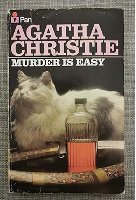
Image Source:
The Pale Horse
This novel by Agatha Christie was first published in the UK in 1961. A TV adaptation incorporating the beloved character Miss Marple was released many years later by the BBC in 2011. The novel is credited with saving two lives and has also been cited in a murder trial. There are some uncomfortable similarities between The Pale Horse’s story and the crimes committed by Graham Young (also known as the Teacup Poisoner) (23-25).
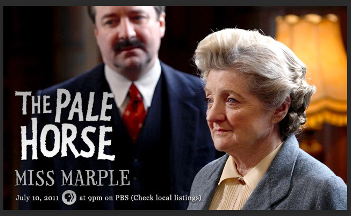
The novel The Pale Horse centres around a series of apparently unrelated deaths and mysteries that have all been attributed to a wide variety of natural causes e.g. heart attacks. The investigation delves into a mysterious agency operating out of an old pub, once called the Pale Horse where these deaths were taking place. Christie’s knowledge of chemicals and medicines can certainly be seen in this story (23-25).
Some of the murders that take place at the Pale Horse include:
· Thallium Poisoning - Miss Marple deduces this from thallium poisoning symptoms spotted in a young victim, including the symptom of severe hair loss. The victims’ favourite face creams were tampered with and thallium was added to them by the killer. The victims’ favourite foods and drinks were also targeted and poisoned (23-26).
The Blue Geranium
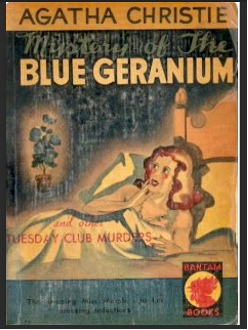
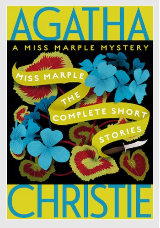
https://www.agathachristie.com/stories/the-blue-geranium (28)
This short story was also adapted as a feature length TV film for the fifth series of Agatha Christie's Marple, starring Julia McKenzie. This complex story encompasses a tale about a fortune teller who visits a bed ridden woman called Mrs Pritchard whose room is decorated with floral wall paper. The fortune teller declares the house to be evil and to avoid blue flowers. Four days later, one of the primroses in the pattern of the wallpaper in Mrs Pritchard’s room changed colour to blue in the middle of the night when there had been a full moon. As time goes by, more flowers on the wall paper turn blue and subsequently Mrs Pritchard is found dead. Miss Marple investigates this startlingly curious case (28-30).
Agatha Christie clearly uses her knowledge of chemistry and pharmacy background to write this story as proven by how the murder is solved. Miss Marple solves the mystery after having once seen the gardener mixing cyanide of potassium with water to kill wasps and she was struck with how much the solution looked like smelling salts. Miss Marple then deduces that the solution was substituted for the bottle of smelling salts that Mrs Pritchard always kept. The cyanide killed the victim and no traces remained, with the gas covering the almond smell of the potassium cyanide. The flowers on the wall paper were made of red litmus paper therefore they turned blue when exposed to alkaline potassium cyanide, which has a pH of 11 (28-30).
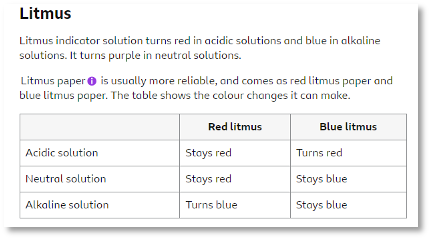
Table Source: https://www.bbc.co.uk/bitesize/guides/zf73382/revision/1
Appointment with Death
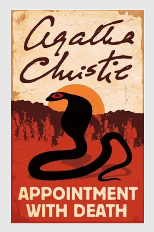
Image Source: https://www.agathachristie.com/stories/appointment-with-death
The case was investigated by Christie’s Belgian detective Hercule Poirot. This is one of many stories inspired by Agatha’s travels in the Middle East and Egypt. It was published as a novel by Collins in May 1938 and went on to be adapted several times. The first adaptation was in 1945 when Agatha Christie adapted it herself for stage. In 1988 it was adapted into a film, starring Peter Ustinov as Poirot (31-32). Twenty years later it was adapted for TV with David Suchet playing Poirot. The story revolves around the death of a former prison warden, Mrs Boynton in the city of Petra in Jordan. The victim is found dead with a needle puncture in her wrist. After Poirot investigates, it is gleaned that Mrs Boynton was administered a lethal overdose of digitoxin via a hypodermic needle (31-32).
Fun Facts
Agatha Christie’s Marriage and links with Archaeology.
Marriage
First Marriage to Colonel Archibald Christie
In 1912, Agatha was introduced to Colonel Archibald Christie at a social event. The son of a barrister in the Indian Civil Service, Archie was a Royal Artillery officer who was seconded to the Royal Flying Corps in April 1913. He was a British businessman and military officer. After meeting the couple fell in love; they married in 1914. Archibald and Agatha went on an around the world tour of The British Empire Exhibition. It is believed some of the travel experiences from this tour Agatha used as inspiration for her novels and crime stories that were set abroad.
Agatha and Archibald also had a child together, a daughter named Rosalind Maragaret Clarissa. The couple divorced in 1928 (33-34).
Second Marriage to Archaeologist Max Mallowan
At a dinner party in 1928, Agatha met a young couple who had just returned from Baghdad, Iraq. Inspired by their stories and descriptions of the Middle East, Agatha cancelled a planned trip to the West Indies and booked a ticket on the Orient Express, deciding herself to complete a lifelong ambition to travel on the luxury train. Agatha’s lifelong dream came to fruition and she travelled on the Orient Express. Surprisingly for a single woman at this time, Agatha journeyed alone, meeting plenty of interesting characters along the way.
From Baghdad she set out across the desert to the archaeological site at Ur which was a Sumerian city-state in ancient Mesopotamia. Here she became friends with eminent archaeologist Leonard Woolley and his wife Katherine. The Woolleys invited Agatha back to Ur in 1930. Agatha accepted and it is in Ur she met archaeologist-in-training Max Mallowan. Max was given the task of showing and guiding Agatha around the archaeological and historic sites; they both enjoyed each other’s company. After spending time together, a relationship blossomed between the two of them and it was cemented by their love for travel and adventure. The couple married later in the year (1930) on their return to The United Kingdom (33-34).
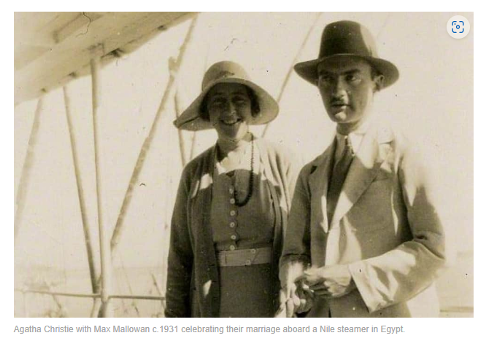
Above is a photo of Agatha Christie with her husband Max Mallowan in 1931 celebrating their marriage aboard a Nile steamer boat in Egypt.
Image Source: https://www.scotsman.com/heritage-and-retro/heritage/rarely-seen-agatha-christie-honeymoon-picture-emerges-3370251 (32)
Links with Archaeology
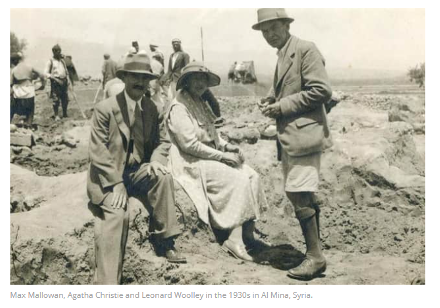
Above is a photo of Agatha Christie at an archaeological site in Syria.
Image Source: https://www.scotsman.com/heritage-and-retro/heritage/rarely-seen-agatha-christie-honeymoon-picture-emerges-3370251
Novels with links to Agatha’s experiences of the Middle East (via travel and archaeological work) include:
· Murder of the Orient Express (Fun fact: Christie travelled on The Orient Express in real life which she used as inspiration to write this novel!)
· Death on the Nile
· Murder in Mesopotamia
· Appointment with Death
· They came to Baghdad (33-34)

Image Source: https://www.agathachristie.com/news/2017/christies-travels-on-the-orient-express (33)
Thank you for taking the time to read this CPD article.
By Priya Ved MRPharmS
References
1. Allard, David & Stephens, Daisy. Agatha Christie: Lifting the veil on the Queen of Crime. BBC News. 2023. [Internet]. Accessed December 2023.
URL: https://www.bbc.co.uk/news/uk-england-oxfordshire-67272899
2. https://www.agathachristie.com/characters
3. Poisons Used in Agatha Christie's Mystery Novels. Owl Location. 2023. [Internet]. Accessed December 2023.
URL: https://owlcation.com/humanities/The-Poisons-of-Agatha-Christe
4. Barros, Rute. How Agatha Christie Revolutionised The Use of Poison in Crime Stories. Medium. 2021. [Internet]. Accessed December 2023.
5. Murder Isn’t Easy: The Forensics of Agatha Christie by Carla Valentine review – science and skullduggery. The Guardian. 2021. [Internet]. Accessed December 2023.
7. A Haunting in Venice. [Internet]. Accessed December 2023.
URL: https://en.wikipedia.org/wiki/A_Haunting_in_Venice
8. Death on the Nile Image. [Internet]. Accessed December 2023.
9. About Agatha Christie. The Home of Agatha Christie. 2024. [Internet]. Accessed December 2024.
URL: https://www.agathachristie.com/about-christie
10. About Agatha Christie. The Home of Agatha Christie. Section - Poirot is born. 2024.
URL: https://www.agathachristie.com/about-christie -
11. Bianculli, D. Case Closed: Agatha Christie's Detective Poirot Solves His Last TV Mystery. 2014. [Internet]. Accessed December 2024.
12. Barros, Rute. How Agatha Christie Revolutionised The Use of Poison in Crime Stories. Medium. 2021. [Internet]. Accessed December 2023.
13. The Mysterious Affair at Styles. The Home of Agatha Christie. [Internet]. Accessed December 2023.
URL: https://www.agathachristie.com/stories/the-mysterious-affair-at-styles
14. Good Read’s Reviews. Sad Cypress. [Internet]. Accessed December 2023.
URL: https://www.goodreads.com/review/show/1628556922
15. Sad Cypress. The Home of Agatha Christie. [Internet]. Accessed December 2023.
URL: https://www.agathachristie.com/stories/sad-cypress
16. Sad Cypress ( 1940)- Suchet. Internet Archive. [Internet]. Accessed December 2023.
URL: https://archive.org/details/20.SadCypress1940-Suchet
17. Dumb Witness. The Home of Agatha Christie. [Internet]. Accessed December 2023.
URL: https://www.agathachristie.com/stories/dumb-witness
18. Agatha Christie Comparison: The One With the Dog - Dumb Witness. Youtube.com. [Internet]. Accessed December 2023.
URL:https://www.youtube.com/watch?v=FFnYLL6lpBs
19. Yellow Iris. The Home of Agatha Christie. [Internet]. Accessed December 2023.
URL: https://www.agathachristie.com/en/stories/yellow-iris-1
20. Yellow Iris: a Hercule Poirot Short Story. Good Reads. [Internet]. Accessed December 2023. URL: https://www.goodreads.com/book/show/12501645-yellow-iris
21. BBC reveals first look at Murder is Easy, based on the classic mystery by Agatha Christie. Bbc.co.uk. [Internet]. Accessed December 2023.
URL: https://www.bbc.co.uk/mediacentre/2023/murder-is-easy-first-look
22. Murder is Easy. Wikipedia. [Internet]. Accessed December 2023.
URL: https://en.wikipedia.org/wiki/Murder_Is_Easy
23. The Pale Horse. The Home of Agatha Christie. [Internet]. Accessed December 2023.
URL: https://www.agathachristie.com/film-and-tv/the-pale-horse
24. How Agatha Christie mystery The Pale Horse may have inspired a murderer. The Guardian. [Internet]. Accessed December 2023.
25. The Pale Horse. Wikepedia.co.uk. [Internet]. Accessed December 2023.
URL: https://en.wikipedia.org/wiki/The_Pale_Horse
26. Has the BBC drama changed the ending of Agatha Christie's The Pale Horse? Radiotimes.com. [Internet]. Accessed December 2023.
URL: https://www.radiotimes.com/tv/drama/the-pale-horse-ending-agatha-christie-different/
27. The Thirteen Problems. Wikipedia . [Internet]. Accessed December 2023.
URL: https://en.wikipedia.org/wiki/The_Thirteen_Problems
28. The Blue Geranium. The Home of Agatha Christie. [Internet]. Accessed December 2023.
URL: https://www.agathachristie.com/stories/the-blue-geranium
29. The Blue Geranium (Agatha Christie's Marple episode). Agatha Christie Wiki – Fandom. [Internet]. Accessed December 2023.
URL: https://agathachristie.fandom.com/wiki/The_Blue_Geranium_(Agatha_Christie%27s_Marple_episode)
30. PubChem – Potassium Cyanide. (Compound). [Internet]. Accessed December 2023.
URL: https://pubchem.ncbi.nlm.nih.gov/compound/Potassium-cyanide#section=Autoignition-Temperature
31. Appointment with Death. Wikipedia.co.uk. [Internet]. Accessed December 2023.
URL: https://en.wikipedia.org/wiki/Appointment_with_Death
32. Rarely seen Agatha Christie honeymoon picture emerges. Heritage News. The Scotsman. [Internet]. Accessed December 2023.
33. Christie’s travels on the orient express. The Home of Agatha Christie. [Internet]. Accessed December 2023.
URL: https://www.agathachristie.com/news/2017/christies-travels-on-the-orient-express
34. Archie Christie. Wikipedia. [Internet]. Accessed December 2023.
URL: https://en.wikipedia.org/wiki/Archie_Christie
